
Wintergreen – Gaultheria procumbens – has been showing up this holiday season in all the stores.
With its bright red berries and glossy red and green leaves, it’s a natural choice for Christmas. Go ahead and grab one, as this hardy little plant might be the perfect houseplant for those without perfect light conditions.
So, Wintergreen is a Thing Now
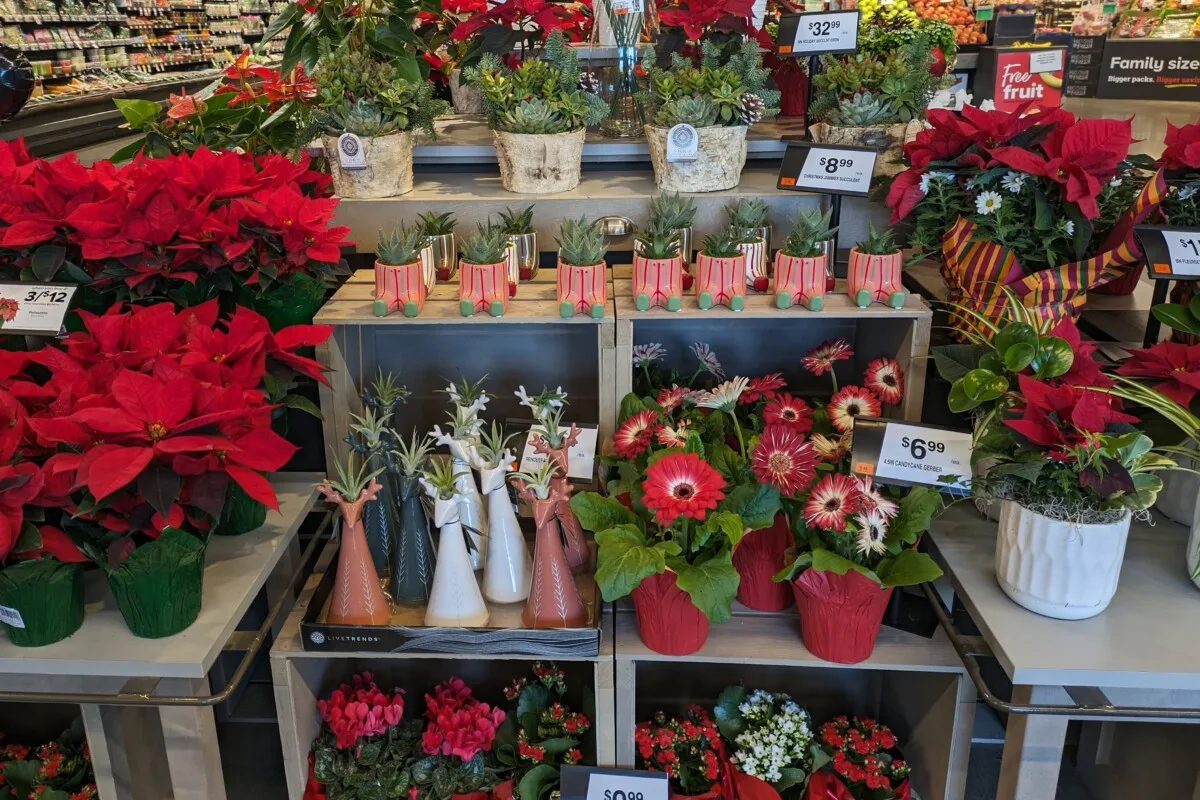
Every year around the holidays, I find myself perusing the live plant offerings at the supermarket and the big box home improvement stores. There are the usual cast of characters for sale: Thanksgiving cactuses (being marketed as Christmas cactuses), poinsettias (always placed too close to the drafty doors), amaryllis and paperwhite bulbs, cyclamen and kalanchoe and your various dwarf evergreens. If it’s a really good store, they’ll even have a hellebore or two.
But this year, when I walked into the grocery store, a new plant caught my eye.
With its cute little Christmasy nursery wrap around the pot and its massive red berries, I almost didn’t recognize it. You see, I normally find this plant on my walks in the woods. It’s one of my favorite wintertime forages. I specifically look for it after the holidays when the berries and leaves have been kissed by a few hard frosts, making them sweeter and more minty.
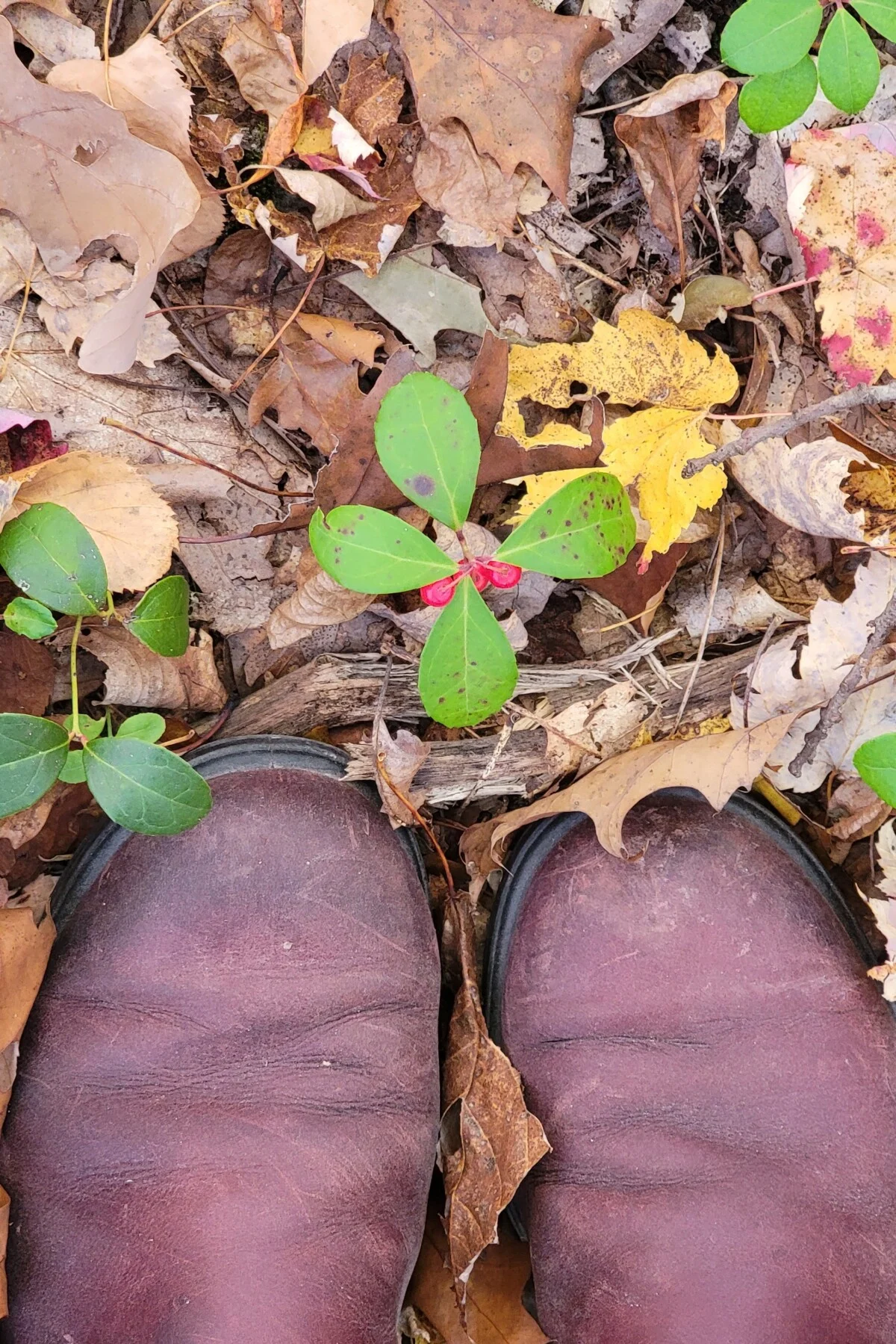
Wintergreen.
Or, as it’s known here in Pennsylvania, teaberry.
Meet your newest disposable holiday décor plant. Apparently, someone, somewhere in the houseplant industry decided wintergreen would be a fantastic holiday plant because this is the first time I’ve ever seen it offered in stores.
I have no idea if they mean for it to be a disposable plant, like poinsettias, or if it’s meant to be a houseplant, like a holiday cactus. But knowing how the commercial plant industry works, they’re hoping everyone will buy them to spruce up their home for the holidays and pitch them in January. Wash, rinse, and repeat next year.
And I think it’s catching on.
Since I purchased my wintergreen plant two weeks ago, they’ve completely disappeared. They’ve all been snatched up.
I spoke with a lovely woman at the supermarket florist’s counter, and she said they introduced them last year. They sold out within days then, too, which would explain why I didn’t see them last season. (She also sold me the last two scraggly plants she had sitting behind the counter.)
But, as someone who has grown up with this plant, I’m here to make a case for keeping it as a houseplant. Because, for once, it’s a plant that might just be suited to our dimly lit, stuffy homes.
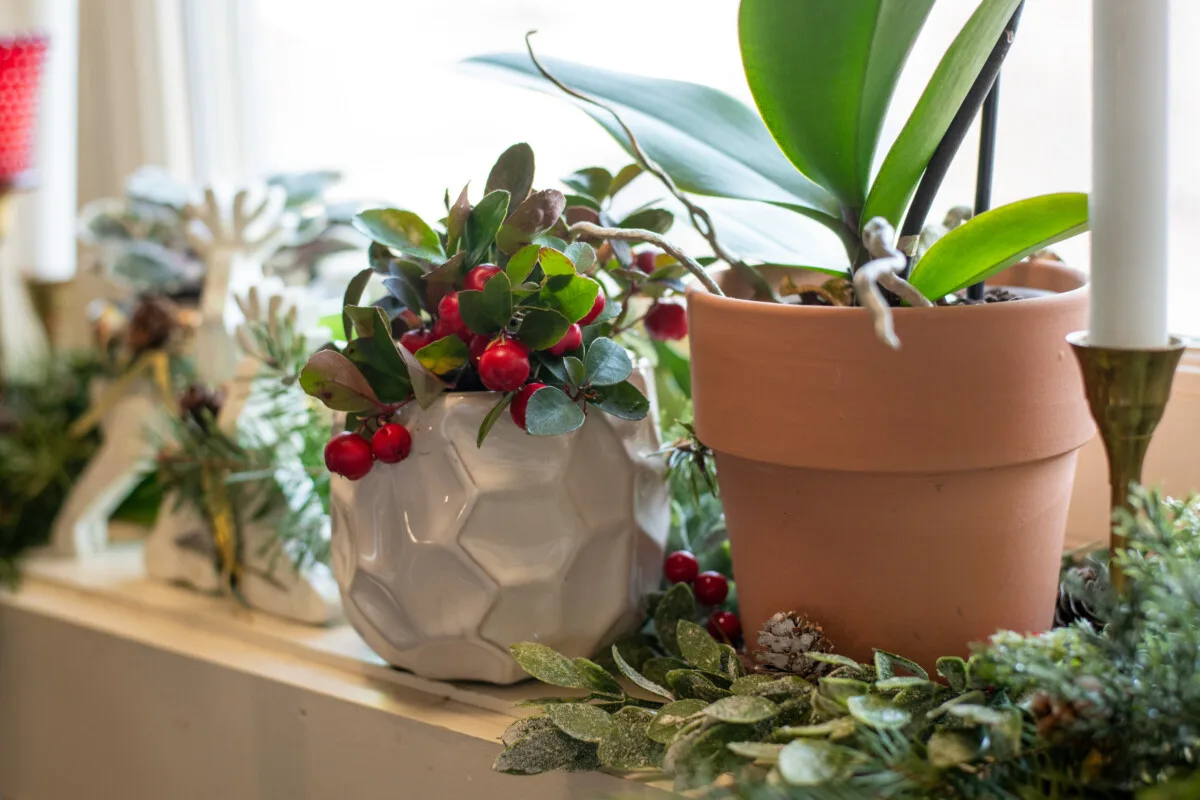
Why Most Houseplants Are a Pain to Keep Happy
When it comes to keeping plants in our homes, we tend to be gluttons for punishment. Nearly all of the most popular houseplants are tropical. They’re used to rich soil collecting on the ground or in the crooks of trees where they grow. Years of organic matter constantly breaking down into loamy soil provides them with a wealth of nutrients.
They enjoy hours of filtered sunlight shining down through the canopy above, giving them the energy to grow huge and flower. And most prefer dry roots but warm, humid air — an easy thing to manage in a lush, tropical jungle.
Not so easy to manage in our homes.
By contrast, our homes are dark, and dry, and if you live somewhere that gets cold winters, are often chilly if you’re a tropical plant. It’s no wonder so many of us struggle to keep houseplants alive; we’re working against their very nature.
A Case for Wintergreen as a Houseplant
I’ve currently got my little wintergreen hanging out on the corner of my dishwasher in my kitchen. Each time I look at it, I think, “Why not? It’s a good choice for a houseplant.” And then I pop one of the bright red berries in my mouth and think of how nice it is to have wintergreen berries on hand to nibble.
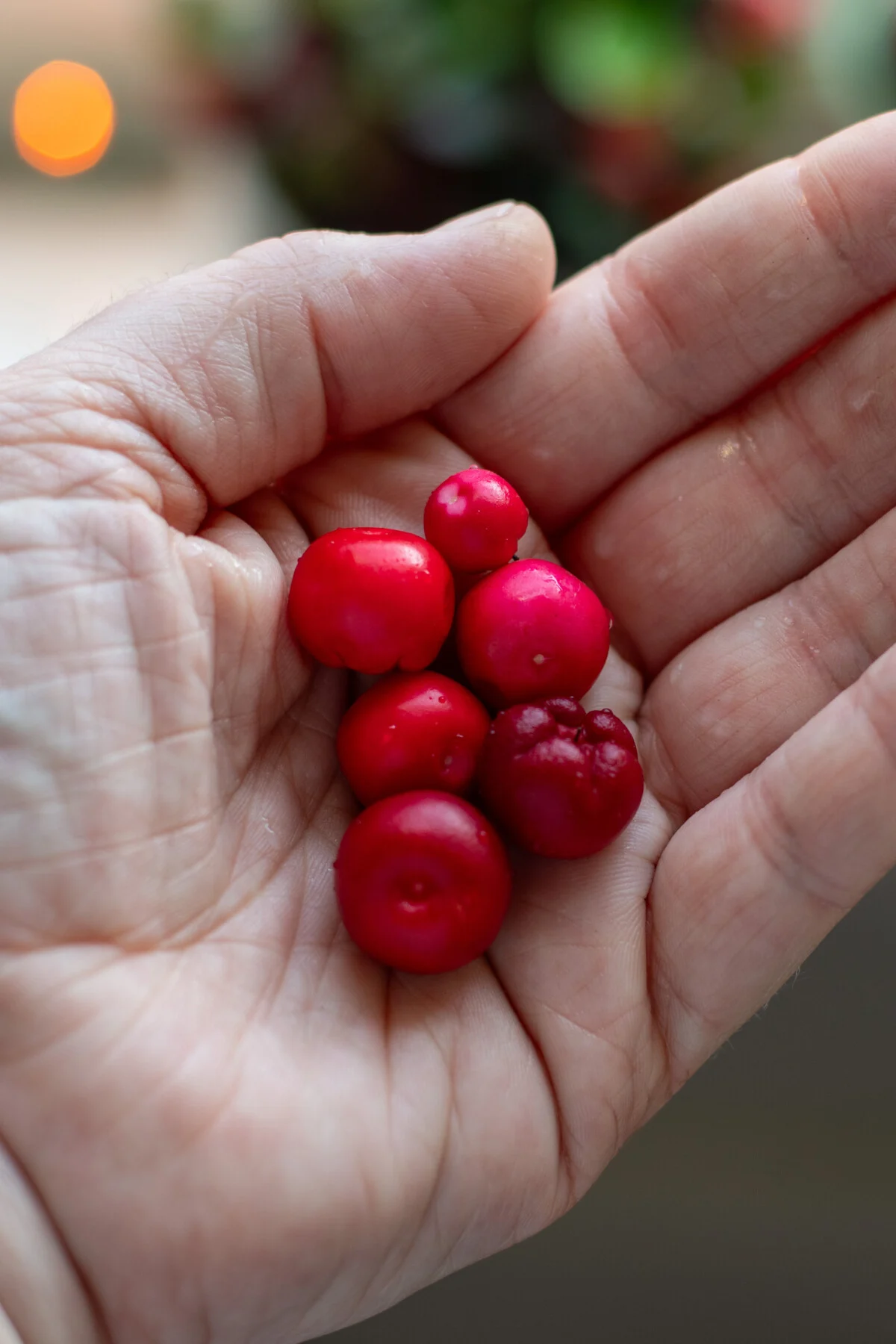
I hope that more people pick up wintergreen plants over the holidays, and I hope you won’t toss them but keep them growing.
Oddly enough, I think they’re quite suited as a houseplant.
Gaultheria procumbens is a North American native, which is a change from our usual tastes in holiday plants. You can find it growing wild in deciduous hardwood forests all over the Eastern United States and Canada. They’re usually found growing close to the ground beneath trees. These scrappy little plants can survive frigid winters and, intense heat and drought in the summer.
Reading between the lines, all of that makes for a tough little houseplant.
They’re Beautiful
Gaultheria are beautiful little plants when potted. In the wild, these plants grow low and shrubby, creeping along the forest floor. The leaves are a dark, glossy green or burgundy. Wintergreen produces tiny bell-shaped flowers that look identical to blueberry flowers, probably because they’re in the same family.
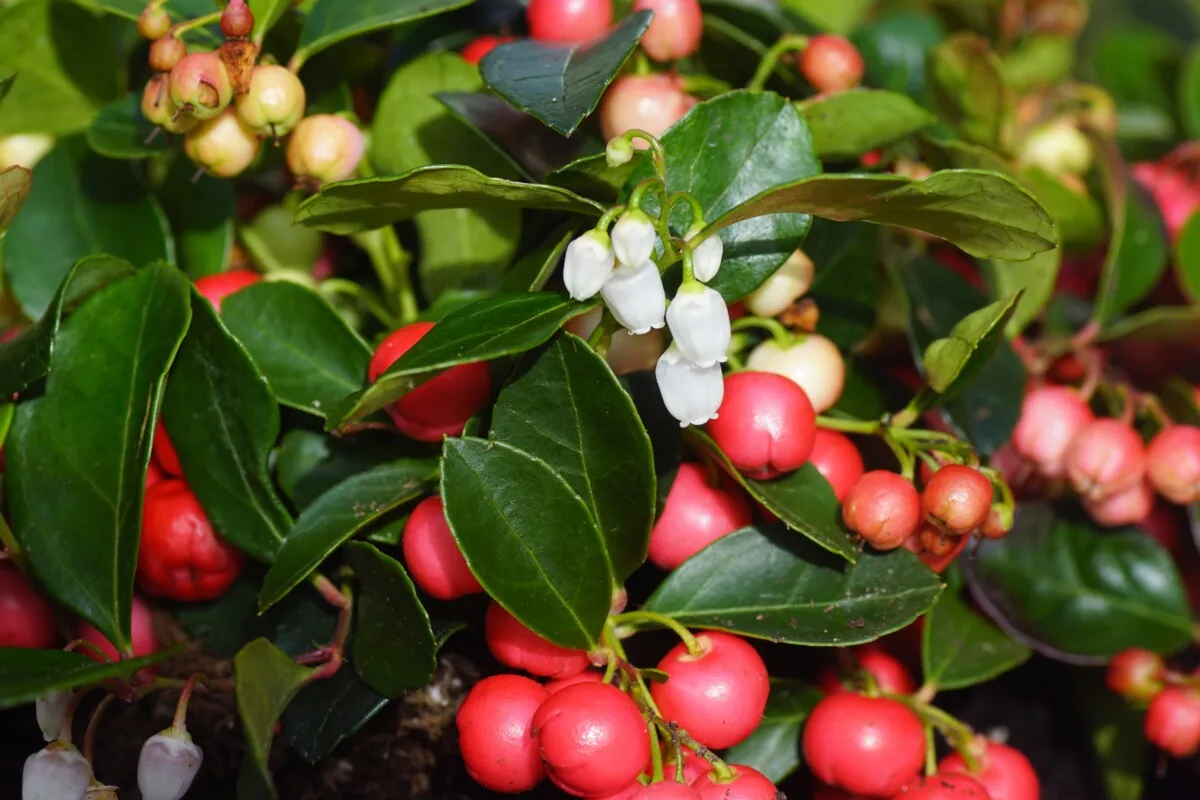
Those flowers grow into berries that vary in color from bright Christmas red to deep pink. The berries have a pleasant, fresh, minty taste, as do the leaves. Both are edible, although you won’t get buckets of wintergreen berries. They’re more ornamental than anything else if you grow it as a houseplant.
Wintergreen stays small and compact, making it perfect for an end table or a bookshelf, and best of all…
Lighting Requirements
Wintergreen prefers partial shade outdoors, which means this isn’t going to be a miserable plant indoors if you can’t provide it with that blessed “bright, indirect sunlight” that just about every dang houseplant seems to need to do well.
Do you live in a home that doesn’t have tons of south or western-facing windows?
Me either.
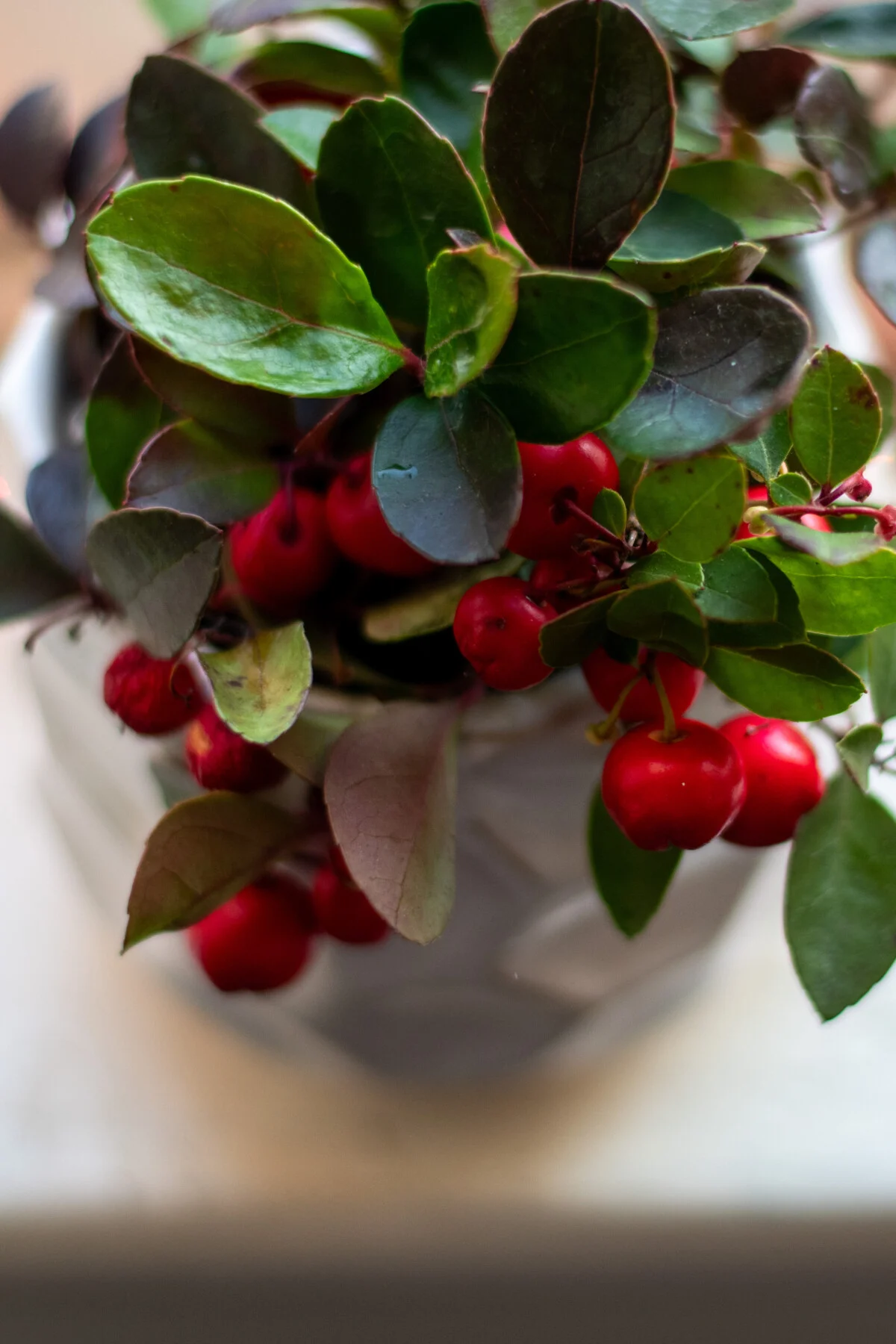
And thankfully, wintergreen doesn’t care.
Choose a spot where the plant receives filtered light; within six feet of a window is a good rule of thumb or in a north-facing window. It should never be in a spot where it receives full sun. This is one plant that does well in the interior of a room.
The other nice thing about growing wintergreen indoors is that because it’s a North American plant, we don’t have to bend over backward to accommodate its seasonal needs. It’s dormant during our winter and grows in the spring and summer, so its light needs align with our seasons. Pick a favorable spot in your home and let nature take care of the rest.
Soil & Pot
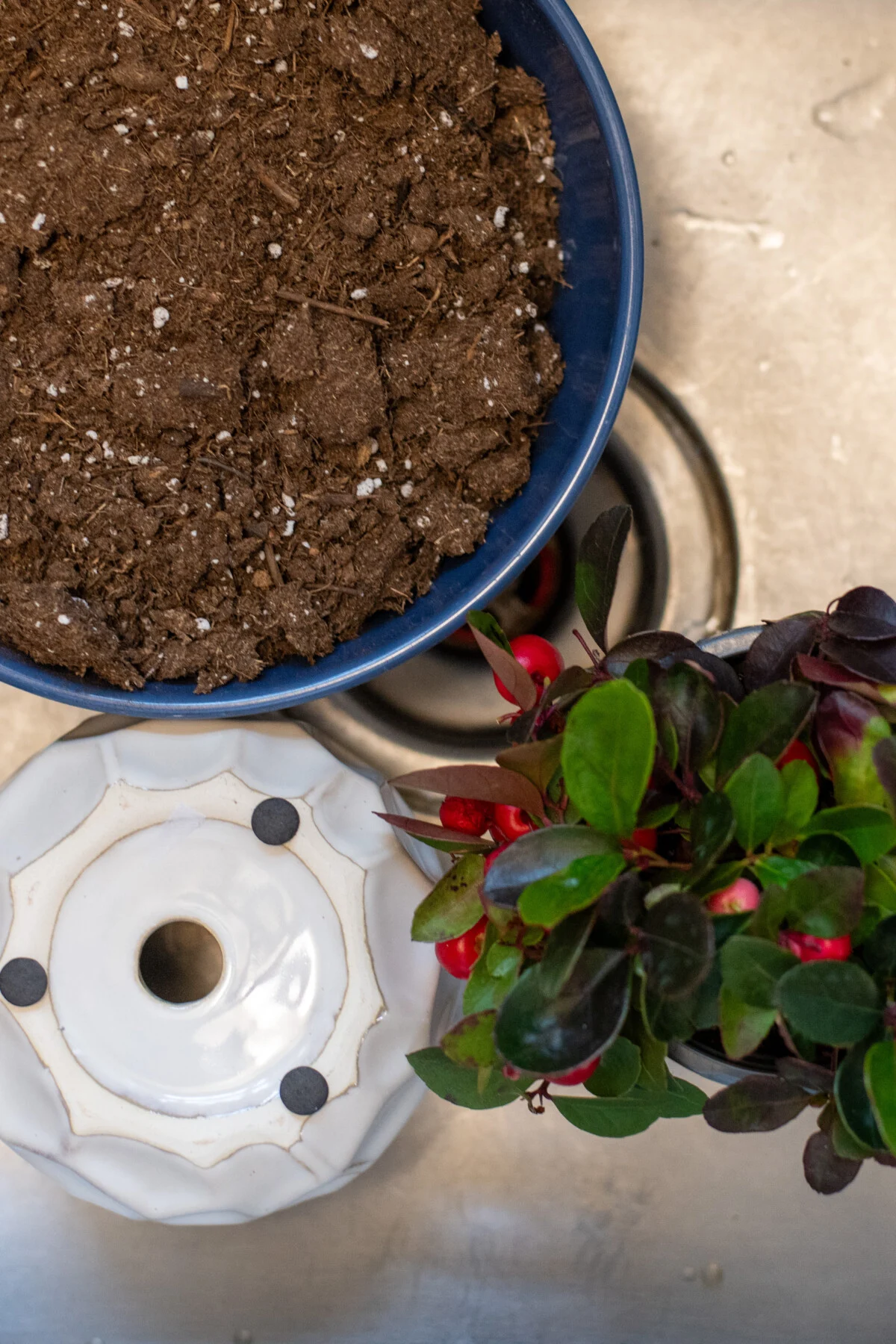
Wintergreen likes moist, well-draining soil. Choose a pot with a drainage hole to avoid root rot. And because it’s a member of the blueberry family, it also needs acidic soil. Adding peat moss to the potting mix can help retain moisture and add acidity to the soil. You may wish to mix a small amount of sulfur into your potting mix if you choose to use a peat-free blend. You’re looking to achieve a pH level between 4-6.
Fertilizer
Gaultheria is a scrapper and will grow in poor soil as well as rich earth. It doesn’t need to be fertilized often, but as you will be growing it in a pot, you will need to either repot it at least once a year or fertilize it once or twice a year to replenish soil nutrients.
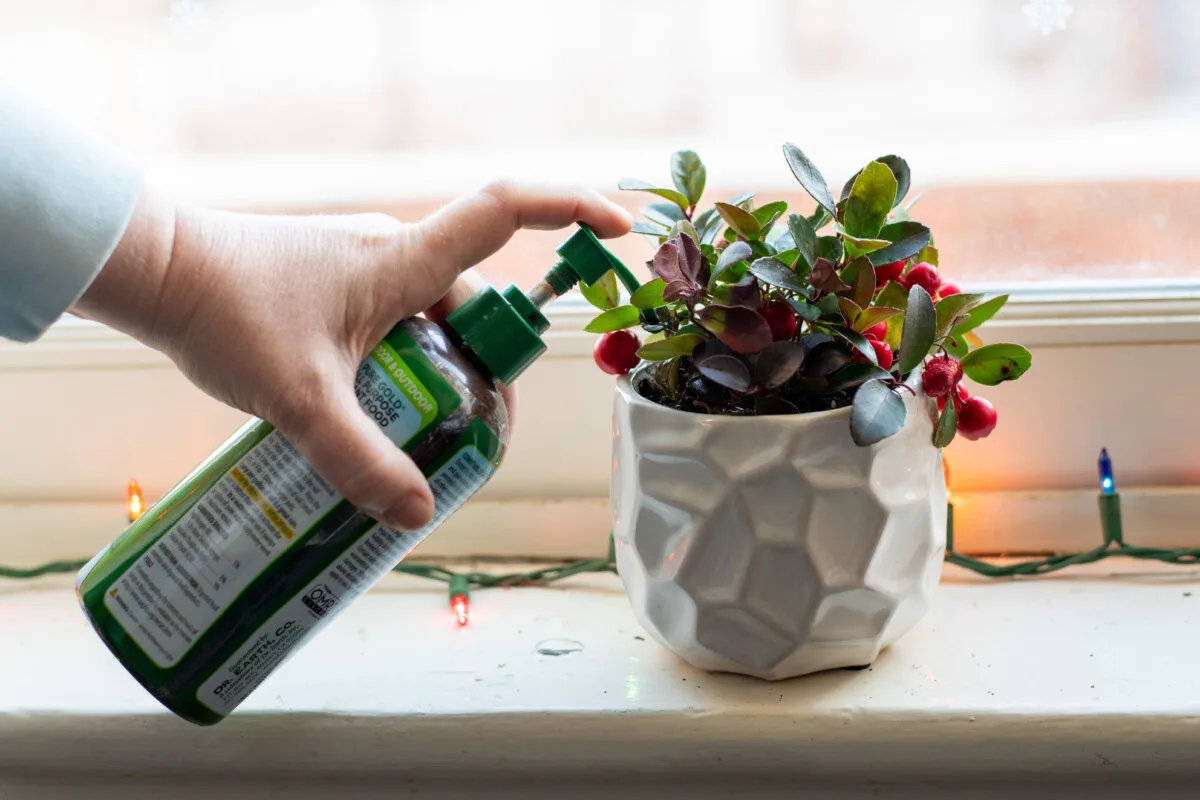
Water & Humidity
Wintergreen does best in soil that’s always slightly moist, but it’s not the end of the world if it dries out. The plant will nearly always bounce back. Because they prefer the shade of a forest floor, these plants need a good amount of humidity. Place the small pot on a pebble tray with water, and that will be more than sufficient.
During the winter, while the plant is dormant, it will need less frequent watering. But keep the pebble tray topped up with water if you heat your home in the winter to maintain humidity around your plant.
Temperature
Because wintergreen is not your typical tropical houseplant, it prefers cooler temperatures. Again, for those of us with cooler (ahem, draftier) homes, this is a good thing. If you keep your home cool during the winter, your wintergreen will be plenty happy.
Perhaps you have a room where no other plants will grow because it’s too cold. I’ll bet your wintergreen plant would be happy there. Or that drafty window on the northern side of the house? Yup, your wintergreen will love it.
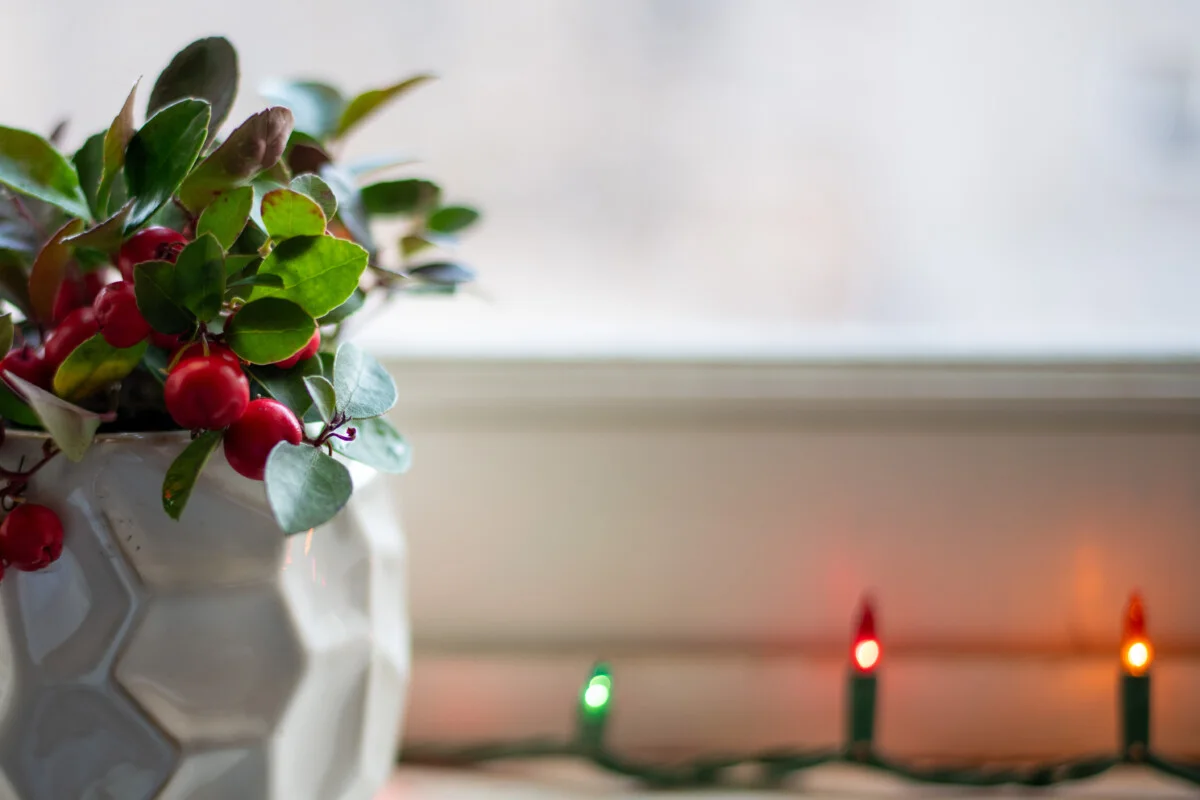
In the summer, you’ll need to keep your wintergreen plant somewhere temperatures won’t exceed 70 degrees F. Depending on your home, you may need to relocate your plant to a cool and shady spot during the summer.
Pests
Kept indoors, wintergreen is generally pest-free. Although, it can become a target for spider mites in overly dry conditions.
Pruning
Prune the plant in the spring as it leaves dormancy to maintain a pleasing shape and encourage new growth.
Pollination
In the wild, wintergreen berries are pollinated by insects, but they are a self-pollinating plant. If you want to enjoy an abundance of beautiful red berries each Christmas, consider moving your wintergreen outdoors to a cool, shady spot once it sets blooms so your local pollinators can take care of this small chore for you.
Once the flowers drop from the plant, you can move it back indoors. Wintergreen berries are long-lived, appearing on the plant around July and lasting well into the winter. Will you choose to eat them or enjoy them for their cheerful red and green holiday display? It’s up to you.
Whether or not you decide to grow wintergreen indoors, I hope you pick one up this holiday season.
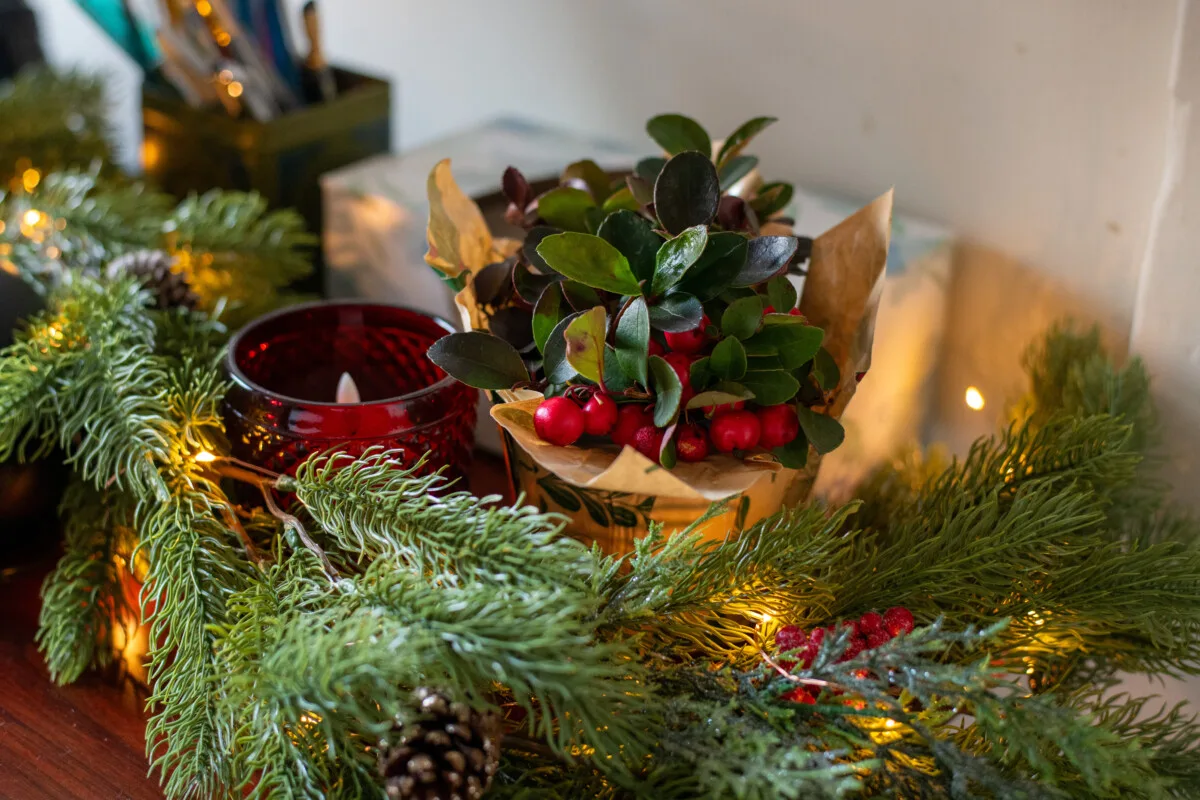
At the end of the day, if you want to enjoy it for the holidays and pitch it on your compost pile in January, go for it. It seems that Christmas wintergreen is a trend that will only keep growing. And who knows, that little castoff plant might be so happy on the compost heap that you may find it growing on its own there in the future.

Get the famous Rural Sprout newsletter delivered to your inbox.
Including Sunday ramblings from our editor, Tracey, as well as “What’s Up Wednesday” our roundup of what’s in season and new article updates and alerts.

